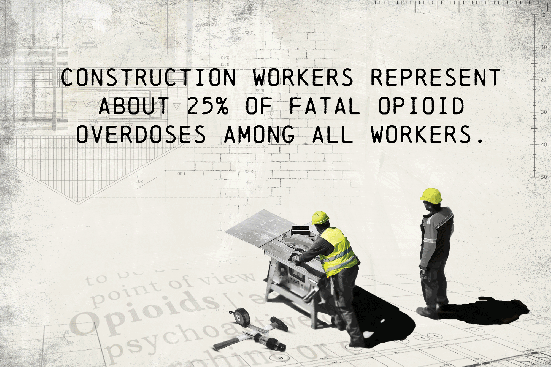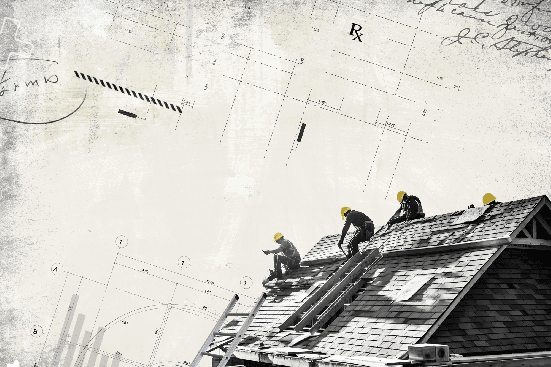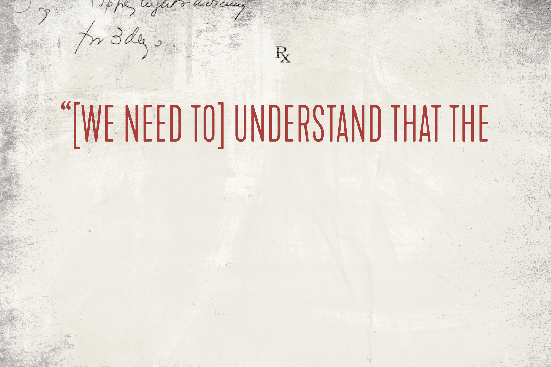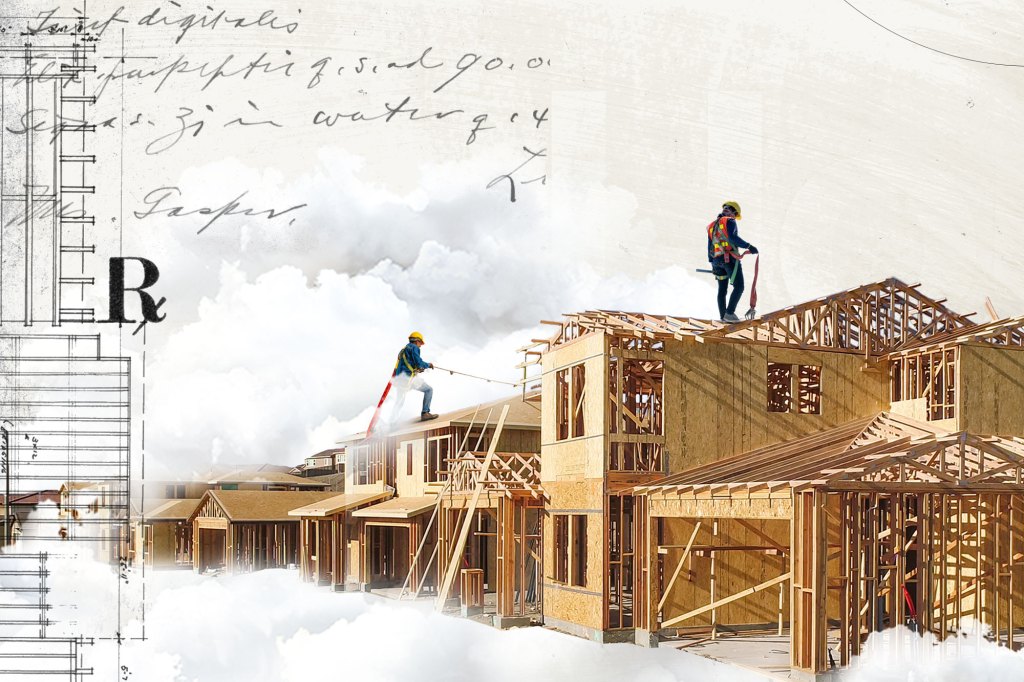The data on opioids is harrowing: Opioid-related deaths increased by 15% from 1999 to 2021, and over 75% of the nearly 107,000 drug overdose deaths in 2021 involved an opioid.
The numbers for the construction industry paint a more concerning picture, with the construction and extraction occupation group and construction industry group having the highest drug overdose death rates in the country. According to the American Addiction Centers, construction workers represent about 25% of fatal opioid overdoses among all workers, and construction workers are twice as likely to have a substance abuse disorder compared with the general population of adults.
“Few people identify [fatal overdoses] as a problem. When you take a look at the news on gun deaths or automobile deaths, right now we’ve surpassed those combined on overdoses,” says Jeff Horwitz, CEO of SAFE Project, a nonprofit focused on overdoses, substance use, mental health issues, and addiction. “That’s fatal overdoses. Nonfatal overdoses in some states [are] 14:1. Those numbers are pretty substantial.”
The link between the construction industry and opioids is also known: job-related injuries. For a physical industry, one dependent on bending, carrying heavy materials, climbing ladders, and engaging in repetitive motions, injuries are likely and, in some cases, unavoidable.
“It’s also the culture that [construction laborers] work in: You don’t want to take time away from the job, so you want to work through the pain. Sometimes the work is seasonal, so you are reluctant to step away if that may be the case,” says David Jaffe, NAHB’s vice president of legal advocacy.
Chris Rodman, opioid projects coordinator for The Center for Construction Research and Training (CPWR), says construction workers are prescribed opioids at least four times more than the general public. The timeline between usage and addiction is short: An individual can become addicted to an opioid within three to five doses.
Industry organizations, including NAHB, Job-Site Safety Institute (JSI), and CPWR, and non-industry organizations, such as SAFE Project, have become more proactive in their efforts to educate about the epidemic and provide resources and tools to help create a healthier workforce.
“[Opioid-related deaths are] getting worse every single year. Construction workers are four times more likely to die of an overdose than workers from other industries. While that gap may be getting smaller, it’s not because the numbers are going down; the numbers are going up for everyone,” says Rodman. “[We need to] understand that the problem is not going away, and we can all be part of the solution.”

Pain Management
“We have to manage pain and understand that by managing pain in the right way,we’ll have a great workforce. Managing pain in the wrong way, it’s going to lead to problems,” says Horwitz. “If we can accept that pain is going to happen in the construction industry because of the hard work they do, we need to accept we can be part of the solution to have the best workforce and not lose people unexpectedly.”
A large bulk of CPWR’s work and resources are related to preventing workplace injuries from occurring in the first place, including resources on preventing head injuries and falls. JSI recommends the installation and implementation of plans to manage safety hazards, which can include trainings, jobsite checks, and specific safety practices.
“If you subscribe to the theory that the nature of the work leads to potential injury and injury leads to pain prescription and potentially opioid addiction, you want to be able to prevent the injuries,” Jaffe says.
However, in the occurrence of an injury, the CPWR—as well as the NAHB, and SAFE Project—suggest the prevention of opioid prescriptions can be a first-line defense. Rodman says the organization has a two-page document that provides employees with information prior to consulting with doctors and prompts individuals to inquire about non-opioid pain medication.
“We think that conversation does need to be had because it is obvious that workers are very likely to be prescribed an opioid when injured, and we suspect that it has to do with the fact that they need to get back to work quickly,” Rodman says. “Helping get you back on the job is sometimes an opioid, which can become a chronic condition where you are dependent on that opioid to stop withdrawal symptoms.”
Jaffe says greater emphasis needs to be given toward non-opioid pain medications, including acetaminophen, Tylenol, and ibuprofen.
“Opioids are not a first line therapy for chronic pain. We need to focus on alternatives to deal with pain,” Jaffe says. “As an industry we can continue to talk and educate our folks.”
Beyond prevention, education is an important element of the holistic approach to combating the opioid epidemic. Workers need to be aware of the dangers of opioids and alternatives, as well as signs to look for on the jobsite. Jaffe says the NAHB has developed a resource specific to the construction industry that identifies behaviors or actions that should raise suspicion.
“One of the things we talked about in our hypothetical[s] was if you see someone who is spending an inordinate amount of time in a port-a- potty in the summertime when it’s really hot. What you hear is that may be a sign of someone who is using drugs,” Jaffe says. “It’s those type of things you want to educate folks on site [about]; red flags, how to have conversations.”
Dr. Lawrence Weinstein, chief medical officer for the American Addiction Centers, says noticeable sedation or drowsiness, marked change in work performance, mood swings, and intermittently nodding off or losing consciousness are all identifiable signs of opioid use.
For intervention on the jobsite, the NAHB and SAFE Project highlighted the Food and Drug Administration’s approval of Narcan for over-the-counter nonprescription use. Narcan is a naloxone product, which is a standard treatment for opioid overdose. The NAHB, SAFE Project, and JSI jointly partnered to produce a video on the importance of having Narcan on the jobsite as part of a safety kit.

Recovery and Return to Work
Despite best efforts to create a safe workplace and educate supervisors and employees on the dangers of opioids, preparation and attention still need to be given to recovery and helping individuals return to work. For too long, the idea of seeking help or admitting to having a problem has been stigmatized, preventing conversations from taking place.
“Too often, addiction is seen as a character or moral flaw and an individual is choosing to use substances each day, and despite this having zero basis, in fact, far too many are not of the understanding that addiction is a disease,” says Weinstein. “Education about addiction is the key to destigmatizing the condition and those wanting to live a life free of substances.”
Finding Help
The CPWR Opioid Resource Page
Forms to take to doctors, opioid awareness training, hazard alerts, and toolbox talks.
cpwr.com/research
Workplace Guidelines to Prevent Opioid and Substance Abuse
Resources to help improve or develop prevention programs.
hwc.public-health.uiowa.edu/
Executive and Supervisor Training
Training materials to help prevent misuse of opioids.
nahb.org/advocacy/
Treatment and Recovery Resources
Advice for transitioning into recovery.
safeproject.us/i-need-help/#treatment
Jaffe says it is up to the individual company to set a caring culture, where employees feel comfortable coming forward without fear. Dismissal immediately upon a positive test does not help the individual address their personal issues and, in the current environment where labor and talent are in such short supply, does not help companies, either.
“When you just don’t allow someone on-site anymore, you’re just bouncing them to another person. That doesn’t help them, and it doesn’t help the industry as a whole,” Rodman says. “There is a cultural change happening when we know that someone has an opioid use disorder, they are someone with a lot of training who have a lot of skills. Getting them back on-site is much better after they have been through treatment as opposed to just keeping them off-site and saying they’ve lost their job. There are too few people working in construction for that to be the answer.”
Rodman, Jaffe, and JSI suggest workers can benefit from return-to-work programs where they are able to stay at work performing temporary light, limited, and modified-duty assignments while recovering from injuries, to reduce the stresses of missing work and potentially missing paychecks.
Weinstein says often those who reenter the workforce after achieving recovery report largely encouraging reactions, though work stressors and fear of being judged are common.
“Companies can work closely with these individuals to learn what reasonable accommodations may be needed in order to get back to a place of comfortability,” says Weinstein. “Providing these employees with the opportunity to take care of themselves and their sobriety builds an environment conducive to productivity and positive morale among employees.”
Stigma
Too often, “druggie,” “weak,” or “addict” are associated with drug use. For many years, the opioid epidemic was also known as the “silent epidemic,” because not many were willing to talk about the issues at the heart of the crisis. While fear of judgment is still present, stigma in the general population—and the construction industry—is beginning to soften around opioids and related issues such as mental health.
“Companies are more willing today to begin the conversation. The more industrywide we think of this as a medical or public health issue, the more we can figure out the inputs that create the issue as opposed to just trying to fix it after the fact,” Rodman says.
Jaffe says the goal of the NAHB’s resource page, toolkits, educational pieces, and efforts related to opioids are to move away from “accusing” and “judging” and bring recognition that substance use disorder is a disease, not a “moral failing.”
“We believe it’s so important for these conversations to happen in the workplace, where people have to acknowledge that overdoses can happen, whether you are using medication that has been prescribed or you are not,” Horwitz says. “It’s really essential to get over the fact that you really believe it’s addicts and junkies, and accept it’s your neighbor or one of 20 million Americans that are struggling with substance misuse disorder. We encourage folks to get over that hump and have that conversation.”
Rodman says peer support is emerging as a manner to approach and discuss opioids among the construction workforce. CPWR is conducting research into the “Mates in Construction” program for Australia. The program is focused on suicide prevention; however, the principle could apply to opioids as well.
“Maybe you’ve had someone who’s had a substance use disorder, they’ve gone to treatment, they are a worker as well so they are your peer. When someone is struggling, that person has been designated as someone on the jobsite that they can talk to or ask about resources,” Rodman says. “I have a feeling that peer support is going to take off and become ubiquitous at some point because it seems to be gaining traction.”
The Power of Stories
Stories and experiences matter. A consensus when discussing opioids in construction is that while statistics are important in understanding the scope of the issue, storytelling is far more important to moving the needle on change.
“We find that while you can talk about statistics, storytelling is so important because it personalizes these issues, it helps people under- stand that there are other people out there suffering; but also, that there’s hope,” Jaffe says. “When you hear people talking about the depths they went to and they were able to get the treatment they needed and they were able to recover, that empowers others to come forward and talk.”
Weinstein says sharing stories helps put a face to the opioid epidemic, and the misconceptions that persist about what someone struggling with an addiction looks like can begin to change.
SAFE Project’s No Shame Pledge is a stigma awareness campaign designed to help facilitate conversations on overdoses and addiction. By taking the pledge, employers and employees recognize addiction as a disease and commit to learning about factors that may contribute to addiction. Employers receive certificates for taking the pledge and can share their participation online as well.
“If leadership does [the pledge] and shares that post to their employees, it’s just another simple way at no cost to show them that you care and you understand these things,” Horwitz says. “Stigma is going to take a lot to beat down, and an actual intentional effort from leadership is important to help prevent that.”

Mental Health
The job stressors and pressures of the construction industry also can lead to a higher incidence of a related and equally challenge hurdle: mental health challenges for workers. The Center for Disease Control and Prevention finds that construction workers are five times more likely to die by suicide than a jobsite injury, with as many as 50% of sector workers experiencing a diagnosable mental health problem.
“We’re building people’s American Dream of homeownership and there are just a lot of stressors that go into it. They want you to be on schedule, on budget, and deliver what they are expecting to be a perfect house. That just weighs on you,” says Tommy Bickimer, CEO of Bickimer Homes in Kansas City.
Similar to the discussions surrounding opioids, Rodman says awareness is most important to the construction industry’s ability to address mental health: Nothing can be done until people understand there is a problem. He says creating a cultural shift and asking peers if they are OK when something seems off can go a long way towards helping.
“Once you ask a direct question, studies show that breaks the stigma. Now they know they have a person they can talk to,” Rodman says. “When we often think about mental health, we are the first line of defense for our friends. We know when our friends are off and we can be there for them in a way that can be instrumental.”
Bickimer says it is important as leaders and as co-workers to recognize that the home building industry is difficult: Buyers want the perfect home, workers can get burnt out from the pressure for perfection, and the physical nature of the work can also take a toll.
For Bickimer Homes, the company recognizes this and tries to strike a balance between the on-job demands and allowing employees enough time to spend with their families. Bickimer says the past several years have been particularly difficult due to the regular job stressors and the difficulties brought on by COVID-19.
“You need to be aware that [mental health] is an issue and make your employees realize that they’ve got the resources to work through those issues. Before, our industry was kind of on an island. You would go out and build the house and you didn’t really have too much support from your office or peers in the industry,” Bickimer says. “What we’ve tried to establish is to let our employees know that they are not alone in this.”
Bickimer Homes has weekly meetings with employees to check in and Bickimer says the company has found “any excuse to get together as a team.” The builder also hosts ‘lunch and learn’ events reviewing different aspects of a particular build.
Bickimer served as the president of the Greater Kansas City Home Builders Association and worked with the association to host a “Save a Life Breakfast,” where Bickimer, Stinson Dean of Deacon Lumber, and Barb Mares, the area director for the Greater Kansas American Foundation for Suicide Prevention Chapter participated on a panel discussing mental illness, suicide, and healthy ways to deal difficult times.
“Before then, we had never had any mental health or suicide awareness discussions at the HBA, it was kind of a taboo topic,” says Bickimer. “To me, it’s always been an important topic that needs to be discussed but it was a taboo topic.”
Bickimer says he hopes the industry continues to openly discuss mental health and that similar events become more common.
“You’ve got to take care of your body, but you’ve also got to take care of your mind. The only way to do that is to acknowledge that you’re struggling there and getting help. Getting help is [a bunch of things], you don’t have to go to a doctor,” Bickimer says. “Just talking to a friend or peer is a tremendous amount of help and just making sure that people know there’s absolutely nothing wrong with struggling mentally. The fact that it’s not talked about enough needs to change. We need to be there for each other.”



